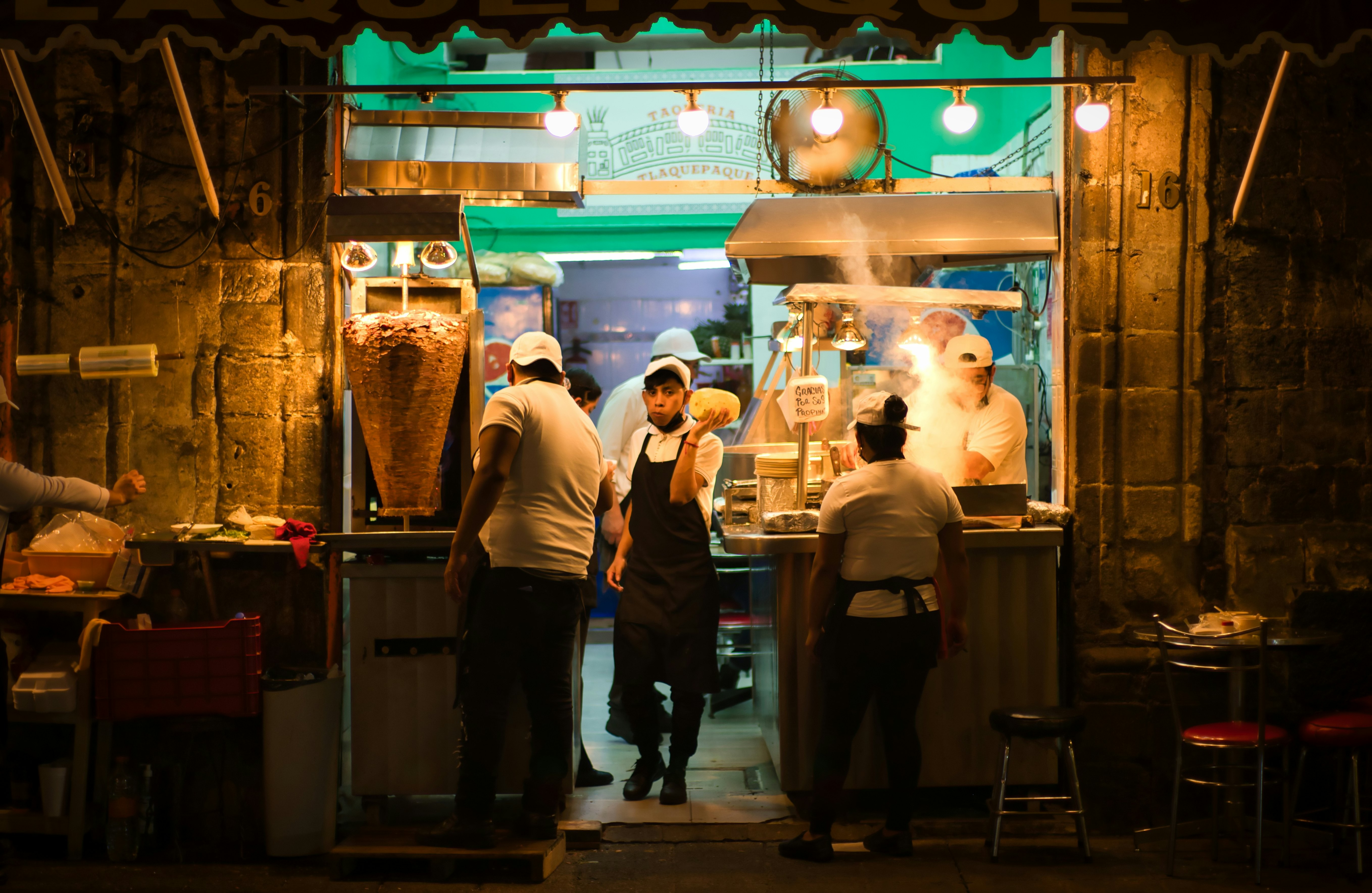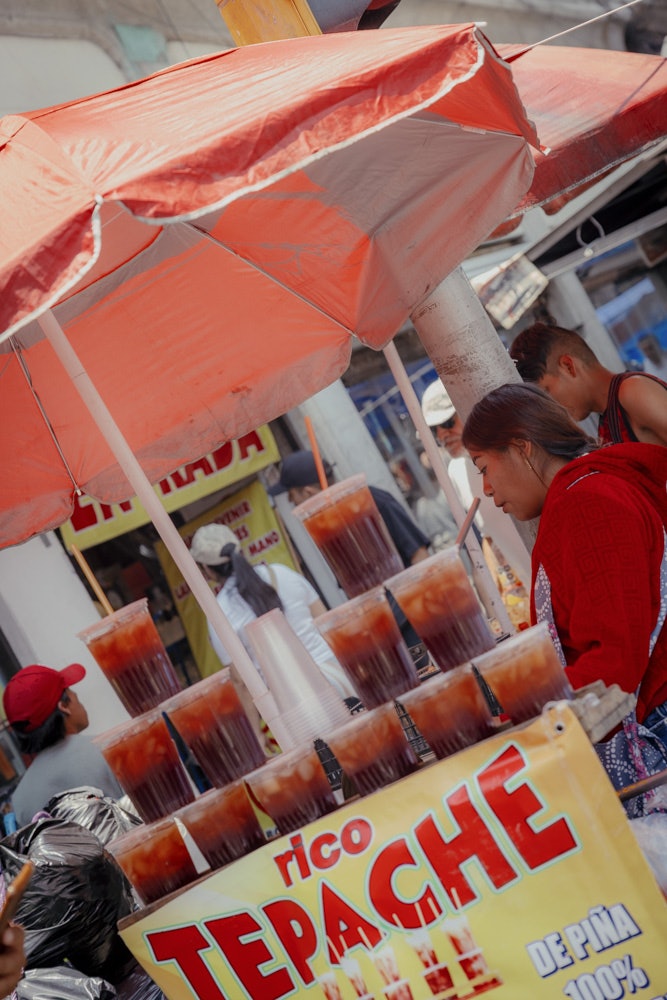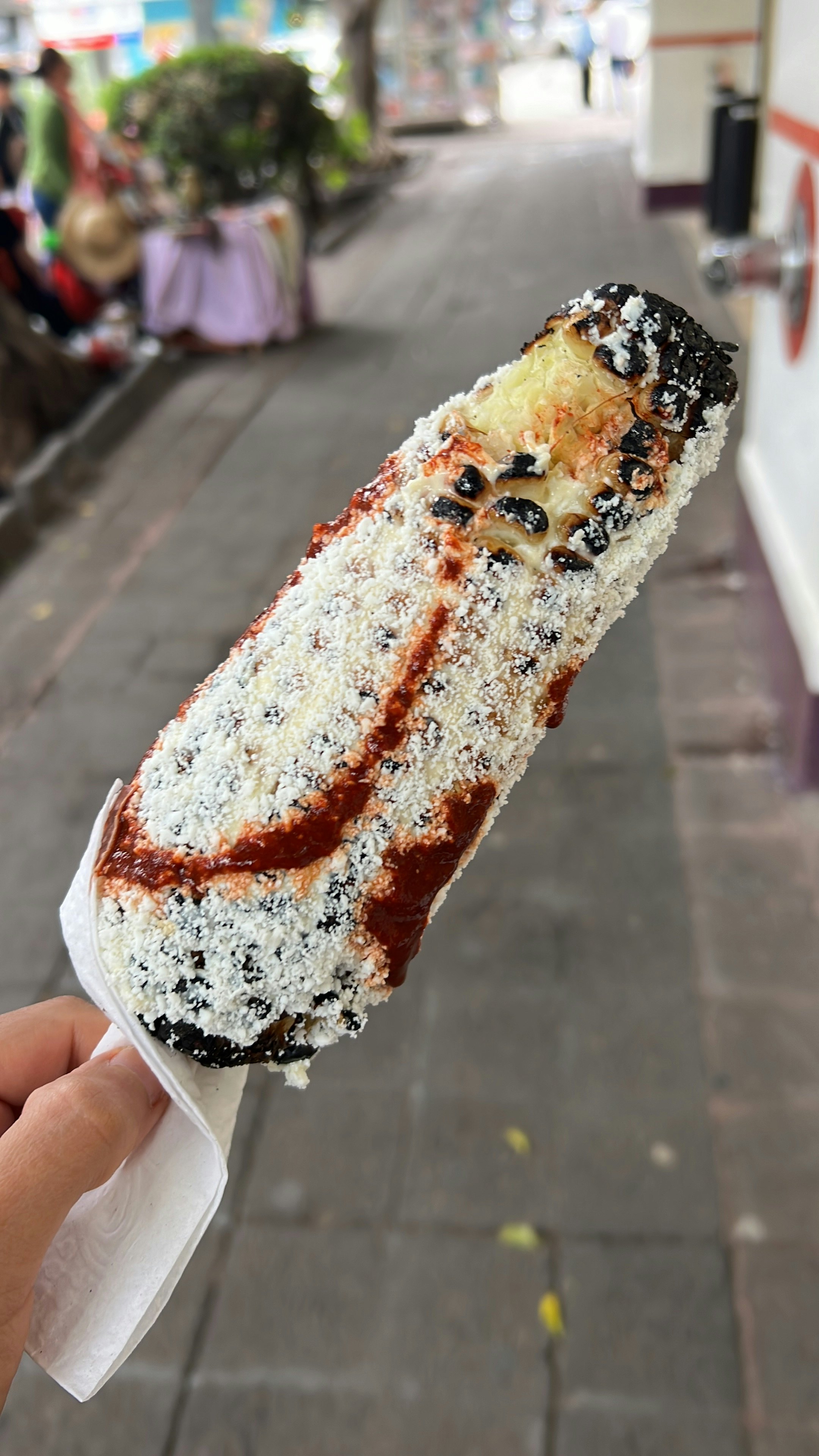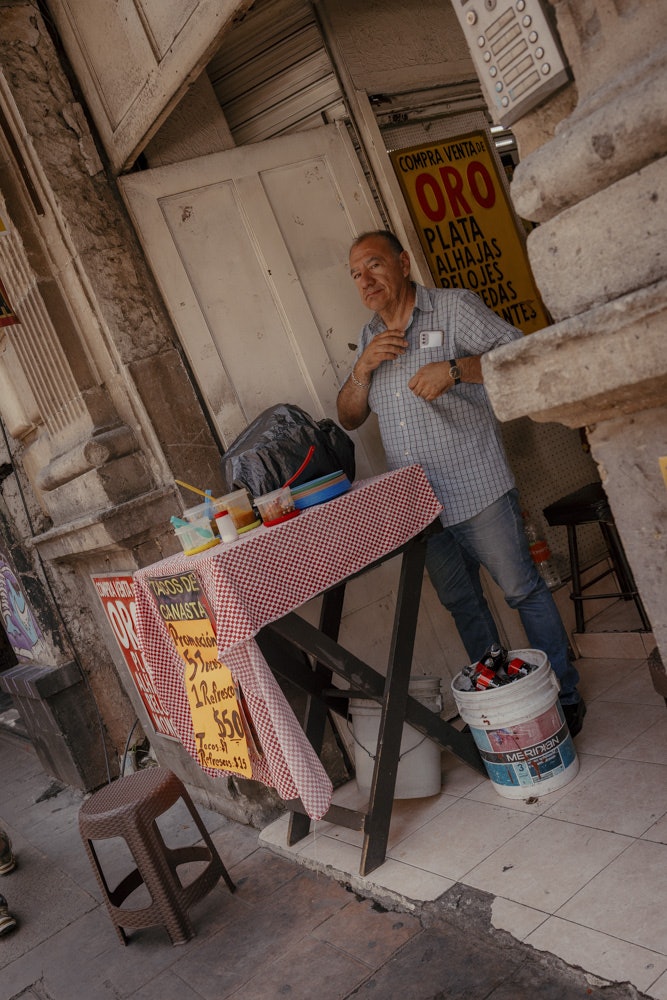
What to order (and where) from street food vendors in Mexico City

Jul 3, 2025 • 6 min read

A vendor selling homemade potato chips on the street of Mexico City. Sun_Shine/Shutterstock
Mexico City's food culture lives and breathes in the streets, 24 hours a day, all year long. One of the most densely populated cities in the world and the largest in North America, Mexico City relies on street food vendors to feed millions of people every day. Chilangos – as we CDMX locals are called – have an intense romance with street food. It is visceral, emotional and often irrational. We argue passionately about where to find the best tamale and what day of the week is best to visit. We go on and on about who is who in the suadero (brisket) lore, and we share intel about which stand has the spiciest salsas.
Since the debut of Netflix's Taco Chronicles series in 2019, street food in Mexico City has become an obsession for international travelers as well. In 2024, for the first time, a taco stand was rewarded with a coveted Michelin star.
Hype and trends aside, it is important to note that street food in Mexico City is essential to the way chilangos live and eat every day. According to a recent study, street vendors who prepare food in Mexico City are part of a sustainable food system, bringing diverse and affordable options to a large population that often has limited access to good and nutritious food because of lack of economic means or geography. According to data from the Secretary of Economy of Mexico, Mexico City has around 59,904 units devoted to food services, with 82% of those in the informal sector, placing street food stands as a significant economic force for thousands of local families.

What to know before ordering
Where there are a lot of people, the food is good
Follow the lead of locals. Chilangos have a lifetime of experience assessing which stands are top-notch, good, bad or terrible. You might walk by a street with stands, one right after the other. Choose the one that is the busiest. Observe. Look at other people's orders and follow along.
Pay in cash after you eat
In Mexico City, first you eat, and then you pay. Chilangos order one or two tacos to start and then a couple of extras to finish because we like tacos right after they are prepared.
The fact that food is prepared or served in the streets of Mexico City does not mean that is not safe to eat
As a local standard and practice, most stands use bottled water to prepare food. It is a good idea to check the level of cleanliness of the stand to get a better understanding of their food management practices.
It's not them – it's most likely you
Your gut health has everything to do with how you react to foreign microorganisms and bacteria. A balanced gut microbiota gives you a better chance of resisting diarrhea-causing pathogens.
If you can't be flexible with your dietary restrictions, stay away
Street food culture at large will not cater to specific dietary restrictions and allergies. Veggies are likely cooked with lard or on the same surface as meats. There is a strong possibility of cross-contamination of surfaces. Eating from street stands in Mexico City requires flexibility.

What and where to eat?
Chilaquiles
Considered the quintessential Mexican breakfast, chilaquiles are not only on every restaurant's menu but can also be found in street stands in the form of a chilaquiles torta, known as guajolota: a bun filled with red or green chilaquiles topped with crema, cheese and oftentimes chicken. You will be skipping lunch after having one for breakfast!
How to get it: La Esquina del Chilaquil, in Condesa, is a beloved institution serving the biggest tortas in town because they have the option of adding an extra milanesa – breaded steak – and tons of crema. Arrive at the stand as soon as they open because the line can get long and moves slowly.

Blue corn quesadillas
Mexico is the land of corn diversity. You can appreciate the differences in the color of the masa of most of the quesadilla stands because the dough has a blue, a deep yellow or, rarer, pinkish tone. The nearby states of Tlaxcala, Puebla and Hidalgo produce blue corn, and thousands of stands in Mexico City use this variety to prepare quesadillas on a comal. The fillings are mostly vegetarian, with options like squash blossoms, mushrooms and quelites – green edible herbs with a spinach-like taste.
How to get it: On Tuesdays and Saturdays, from around 8am to 4pm, there is a blue corn quesadilla stand in the parking lot of the Mercado de Jamaica. The quality of the blue corn masa is exceptional, and the most popular quesadilla at the stand is filled with mushrooms.
Suadero and longaniza tacos
This is truly a Mexico City-style taco. The brisket and sausage cook in the same pot filled with copious amounts of lard, where the flavors of the meats blend during the slow-and-low process. There are probably thousands of suadero stands all over the city. Suadero and longaniza tacos are small, at the most two or three bites per taco, but are rich in flavor. Order one of each or try the half and half, known as campechano.
How to get it: Tacos El Paisa, in the San Rafael neighborhood, is legendary for a style of suadero you can order in a chunky piece instead of chopped. The red salsa is bright red and spicy; the meat is crispy on the outside and yet juicy and tender. This is a pay-first-and-eat-later stand.

Elotes and esquites
Corn on a cob or cooked kernels in a cup, coated with mayo, cheese and chili, are popular snacks in Mexico. Either grilled over charcoal ambers or boiled in a pot alongside chicken feet, esquites and elotes can be found as soon as the sun sets. Elote vendors usually come out later in the day, usually working from supermarket carts. September and October are months when the seasonal cacahuazintle corn hits the streets; you will recognize it by its thick and chunky kernels.
How to get it: The stand on the corner of Napoles Street and Reforma, known as Esquites Reforma 222, offers boiled, grilled and roasted esquites topped with at least five hot sauces and the house's peanut oil salsa.

Canasta tacos
Also known as tacos al vapor in other regions of Mexico, canasta tacos are prepared using a basket lined with paper and plastic, then assembled with diverse fillings like beans, potato and chicharron, stacked until the basket is full and, finally, drenched with chili oil. The result is a kind of unique and delicious soggy taco. Canasta tacos are everywhere in Mexico City because the vendors usually travel on bicycles and park on busy corners, constantly on the go. There are plenty of taco joints that focus on this style of taco.
How to get it: Tacos Joven, in the Narvarte neighborhood, has been around since 1971 and is beloved by locals. Order the chicharron and fried beans, and don't skip on the salsas and pickled carrots and veggies.















